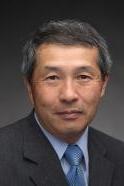Biological Sciences
生物科学荣誉学院课程为优秀的学生提供了与生物科学和生物医学科学教师一对一互动的机会,学习生物学的许多方面. 最大的机会将提供给学生进步远远超出在传统课程中发现的材料.
学生可以选择细胞和分子生物学(MCB)或生态学, Evolution, and Behavior (EEB) track. Care is taken to ensure that each student, depending upon particular career goals, 满足研究生工作或专业学校(医学)的入学要求, dentistry, veterinary medicine, physical therapy, etc.).
Program Overview
以下列出的必修课程供学生参考. Upon consultation with the Director of Studies, 本课程可以根据学生的个人兴趣和职业目标进行修改.
Core Biological Sciences Requirements
- Introduction to Biological Sciences I & II
- General Genetics
- Fundamentals of Animal Cell Biology
- Principles of Evolutions
- Principles of Physiology
- General Microbiology
- Biochemistry
MCB Specialization
- Human Anatomy or Comparative Vertebrate Anatomy
- 发育生物学,分子遗传学,或基因调控机制
- Laboratory Genetics or Cell and Microbiology Techniques
EEB Specialization
- Animal Ecology and Comparative Vertebrate Anatomy
- Four additional EEB courses, including:
- Field Ecology
- Evolutionary Genetics
- Animal Behavior
- Population Ecology
- Animal Conservation Biology
- Aquatic Biology
- or other EEB courses
Other Requirements
- Freshman Composition
- Junior Composition
- Calculus and Statistics
- Physics
- Inorganic and Organic Chemistry
- Biochemistry
- Tutorials
- Senior Thesis
Tutorials
除了正式课程外,每学期还必须上辅导课.
Freshman Year
在大一,每个HTC生物科学专业的学生都要参加以下科目的小组辅导:
- 秋季:分子与细胞生物学、神经生物学和生理学
- Spring: Ecology, evolution, and behavior
Sophomore and Junior Years
在该计划的大二和大三学生参加高级教程. 虽然一个辅导课可以延长到一个学期以上,由一个教师导师授课, 教务主任强烈鼓励学生每年至少选修两个不同主题的辅导课. 如果需要,学生每学期可以参加一次以上的辅导课.
高级辅导课的形式由学生和教师导师讨论决定. There are no limits to the field of study, 经允许,可以在学校任何部门的教师导师那里进行. 形式可以包括指导阅读、实验室研究、实地研究等.
Senior Thesis
在该计划的最后一年,每个学生将从事一个独立的研究项目. 该项目的安排将与研究主任和教师论文顾问在感兴趣的领域进行协商. 我们强烈鼓励每位学生在大三秋季学期结束前选择他们的论文指导老师,并在大三春季学期开始设计他们的论文项目,包括撰写招股说明书. 高年级学生必须在newbb电子平台最后一个学期的研讨会上展示他们的研究成果. 高度鼓励在科学会议或专业期刊上发表结果.
Eligibility
申请人的选择是基于卓越的学术能力和自我激励的本科学习和研究潜力.
Director of Studies
Associate Professor, Soichi Tanda
740.593.2270
Life Sciences Building 215
tanda@mediagate-egy.net
Education
B.S., Biology: Hokkaido University, Sapporo, Japan, 1980
M.S., Zoology: Hokkaido University, Sapporo, Japan, 1982
Ph.D., Zoology: Hokkaido University, Sapporo, Japan, 1985
Research Interests
One of the greatest mysteries in the universe is how a single fertilized egg develops into a multicellular body with different organs; that is, development. 发展过程是建立在增殖和分化之间的复杂平衡之上的. 打破这种平衡往往会给我们的生活带来毁灭性的后果. 一个很好的例子是癌症,细胞无休止地增殖,直到夺走宿主的生命. Our laboratory uses a model organism, the fruit fly Drosophila melanogaster, 为了了解这种平衡是如何通过包括转基因果蝇在内的遗传学来维持的, cell biology, microscopy, and bioinformatics. 我们目前的项目旨在了解控制JAK/STAT癌基因通路活性的遗传和分子机制, whose overactivation leads to leukemias in humans and Drosophila. 我们研究了影响JAK/STAT活性水平的基因, what genes are controlled by the pathway, and what other pathways, such as the Wnt pathway, cross talk with this pathway.
我们实验室的另一个项目是了解肌动蛋白细胞骨架如何构建特定的细胞结构,如丝状足, thread-like extensions from the surface of the cell. 我们特别感兴趣的是微绒毛及其衍生物. 微绒毛是一种薄薄的手指状结构,类似于细胞表面的牙刷刚毛. 内耳毛细胞的立体纤毛是微绒毛的一种变体,对听力和平衡至关重要. 尽管许多蛋白质调节肌动蛋白细胞骨架的动力学, we investigate the role of a novel protein called Clic, loss of which causes deafness in humans and mice. 我们利用免疫组织化学研究Clic如何与其他蛋白质一起在小鼠体内建立和维持立体纤毛, biochemistry, and microscopy. We also use Drosophila 寻找更多的与clici相互作用的蛋白质,以更好地了解立体纤毛的生物学. Once we find candidate genes using Drosophila, 我们将研究它们是否与Clic一起在小鼠毛细胞中起作用.
Selected Publications
Epps, J.L. and S. semushi果蝇突变在胚胎发生过程中阻止Bicoid的核输入. Curr. Biol. 8: 1277-1280.
Apionishev, S., D. Malhotra, S. Raghavachari, S. Tanda, and R. S. Rasooly, 果蝇UBC9同源物介导减数分裂中同源物的分离. Genes to Cells 6: 215-224.
Huang, L., S. Ohsako, and S. Tanda, (2005) lesswright突变激活rel相关蛋白, 导致黑腹果蝇幼虫血细胞的过量产生. Dev. Biol. 280: 407-420.
Casso, D., S. Tanda, B. Biehs, B. Martoglio, and T. B. Kornberg(2005)果蝇信号肽肽酶是幼虫发育所必需的蛋白酶. Genetics 170: 139-148.
Littler, D. R., S. J. Harrop, L. J. Brown, G. J. Pankhurst, A. V. Mynott, P. Luciani, R. A. Mandyam, M. Mazzanti, S. Tanda, M. A. Berryman, S. N. Breit, P. M. Curmi(2007)脊椎动物和无脊椎动物CLIC蛋白的比较:秀丽隐杆线虫ec -4和黑腹果蝇DmCLIC的晶体结构. Proteins 71: 364-378.
